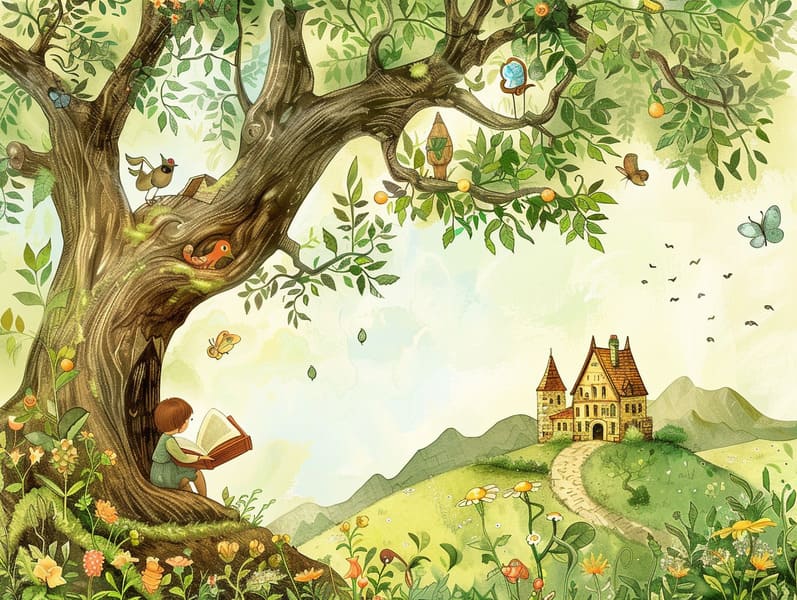The Origins of Mythical Fairy Tales with Its Perpetual Loveliness.
The Origins of Mythical Fairy Tales with Its Perpetual Loveliness.
Blog Article

Best fairy tales have ancient roots. These tales have been narrated from one generation to the next ages before they were ever recorded. They emerged from a variety of traditions, including African traditions. They were initially passed along among adults, often carrying themes and messages aligned with the societal norms and beliefs of the time.
The Grimm brothers, Jacob and Wilhelm Grimm, were among the first to assemble many of these beloved narratives. Their volume, "Grimm's Fables," included narratives like "Cinderella," "The Story of Hansel and Gretel," and "Snow White," which have since become classics in the world of classic fairy tales. Similarly, Andersen's fanciful tales, such as "The Mermaid's Tale," and "The Little Duckling," have floated into hearts worldwide, establishing their place in the pantheon of treasured fairy tales.
Despite their age, fairy tales remain as applicable as ever, especially as kids' bedtime tales. These delightful tales are now available in diverse formats, including colorful picture books, fantastical animations, and web-based fairy tales.
Their ongoing significance can be ascribed to several captivating elements:
Valuable Lessons: Traditional fairy tales often offer important moral lessons. Fairy tales like "The Tale of the Boy Who Cried Wolf" teach the importance of sincerity, while "The Hare and the Tortoise" highlight the virtues of determination and humbleness. These tales offer children clear distinctions between ethical and unethical, developing their moral compass in a subtle yet profound way.
Compassion and Knowledge: Fairy tales frequently showcase figures facing problems and hurdles, urging children to understand with their struggles and cheer for their triumphs. For instance, "Beauty and Her Beast" illustrates the benefit of seeing inner beauty to appreciate the true being of a soul, building perception and insight.
Cultural Perception: Many fairy tales are interwoven with the cultural contexts from which they emerged. Learning from these fairy tales can provide enlightening views into different backgrounds, encouraging a sense of cultural insight and understanding.
Imagination and Innovation: The fantasy-filled elements in traditional fairy tales—enchanted forests—boost children’s imaginative ideas. These tales guide readers to fantasy realms, motivating imaginative ideas and a sense of wonder that lasts a lifetime.
Timeless fairy tales are not only enchanting but also illuminating. They function as delightful tools in strengthening various cognitive and emotional skills in little ones. When old fairy tales are narrated, they foster linguistic abilities by showing new word meanings and complex sentence structures. This practice also advances auditory skills and attentiveness, as the young focus on every detail, looking forward to see what happens next.
Furthermore, analyzing the themes and characters of ancient fairy tales can enhance problem-solving abilities and intellectual skills. Little ones are shown to recognize patterns, make predictions, and make sense of cause and effect. These examinations also help kids convey their thoughts and feelings, cultivating their emotional intelligence.
In today’s electronic age, the existence of web-based fairy tales has made these fairy tales more acquirable than ever. Online platforms and applications offer huge assortments of old fairy tales that can be explored or played anytime, anywhere. Fairy tales narrated are particularly popular, featuring an entertaining method for children to be a part of these bewitching tales. Sound books and read-out-loud stories take characters and settings to life, often enhanced by bewitching harmonies and background music that augment the storytelling experience.
The timeless allure of classic fairy tales lies in their ability to evolve to today's society while holding onto their basic principles. Contemporary modernizations of these stories often bring in more diverse figures and modern settings, making them relatable to today’s audience. However, the fundamental themes of valor, humanity, and fairness remain unchanged, continuing to impact readers of all ages.
Traditional fairy tales also offer a sense of familiarity and recognition. They share a well-structured narrative with a clear beginning, middle, and end, often winding up with the wrap-up of conflicts and the triumph of good over evil. This certainty can be reassuring for children, introducing a sense of sturdiness in an fluid world.
Timeless fairy tales continue to entrance and inform new generations, maintaining their charm and impact in modern society. As kids' bedtime tales, they give a perfect blend of charm and understanding, furthering moral values, empathy, and creativity. The availability of internet fairy tales and the widespread nature of fairy tales voiced validate that these timeless stories remain obtainable to new generations.
By upholding and recounting these narratives, we continue to treasure the rich tapestry of storytelling and cultural heritage. Whether you are discovering a gorgeously illustrated book, enjoying a web collection, or listening through an read-aloud book, the spell of Grimm's fairy tales is always within reach. These fairy tales point out of the unfading spell of tales and its ability to tie us across time and awesome site space.
Whether you are accessing a richly illustrated book, delving into a web-based collection, or listening through an voice book, the spell of old fairy tales is always within reach.
These stories emphasize of the invariable spell of narratives and its ability to link us across time and space, creating a bond that charms and informs alike.